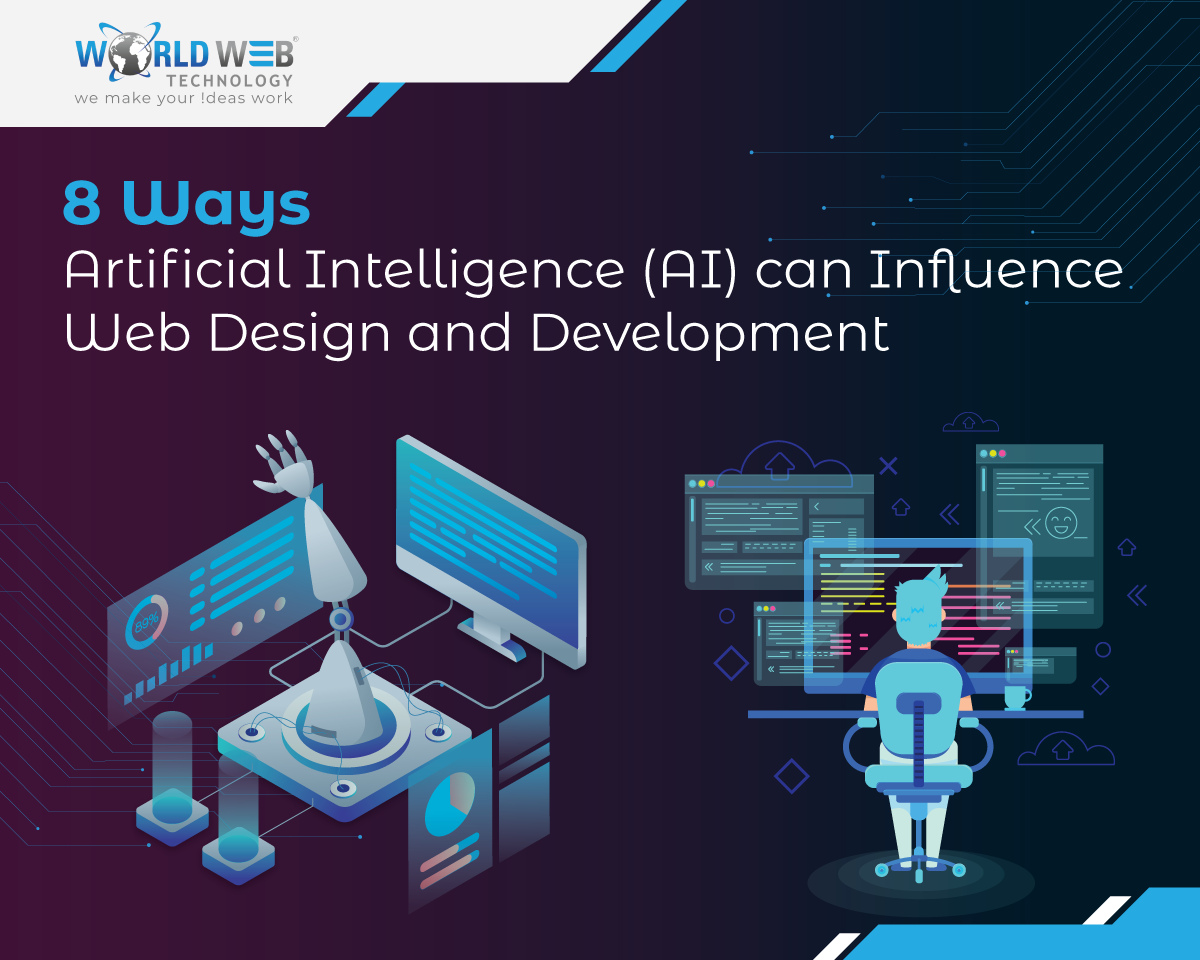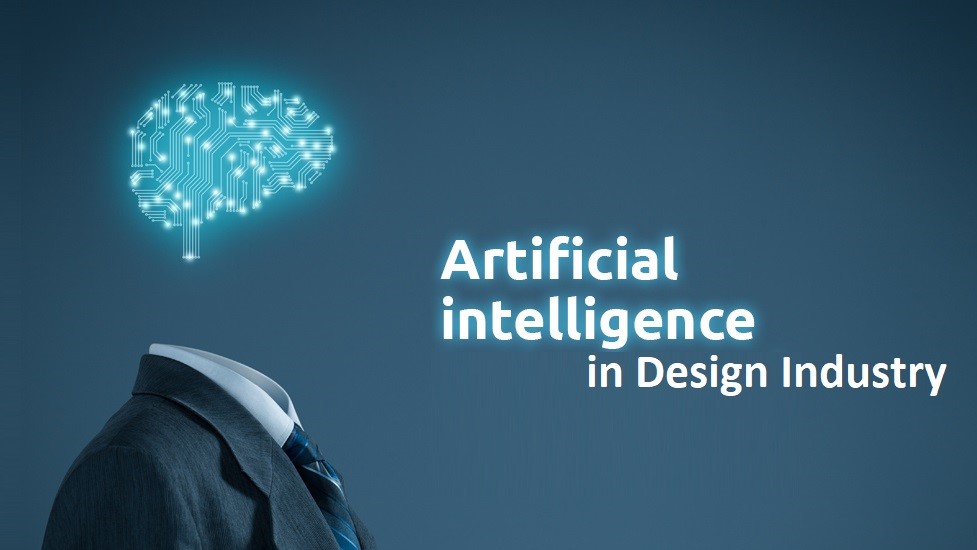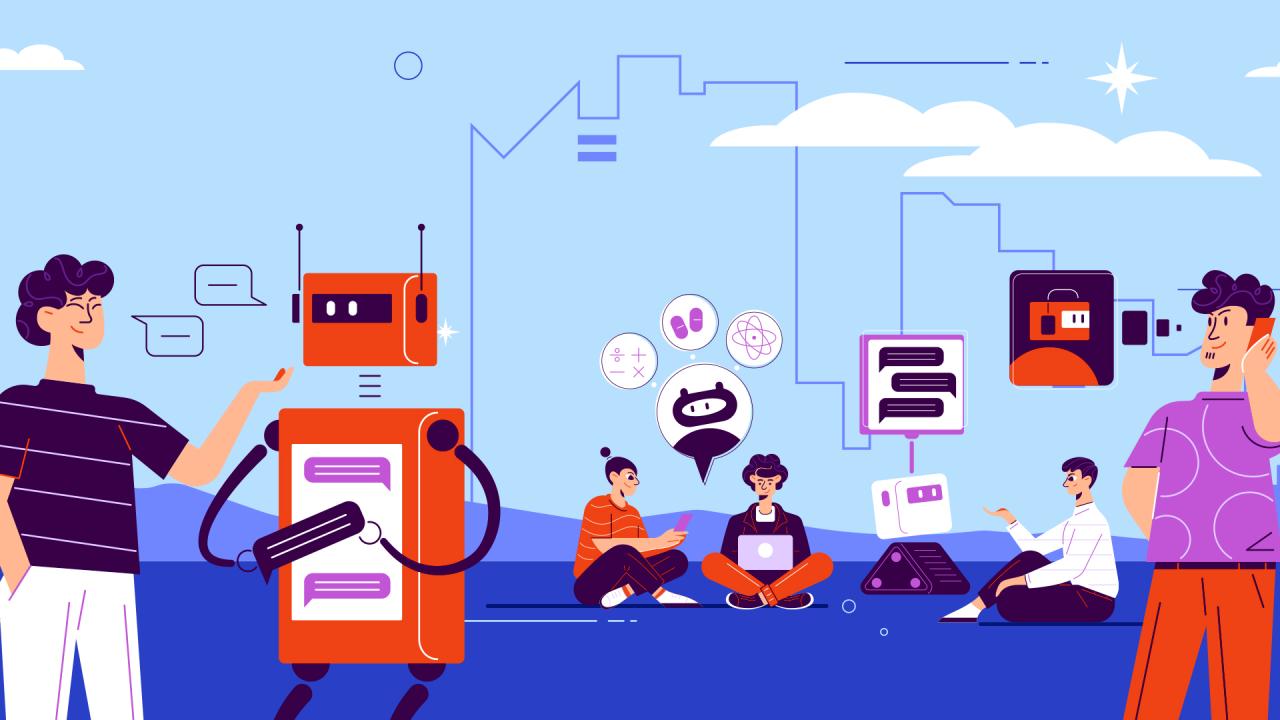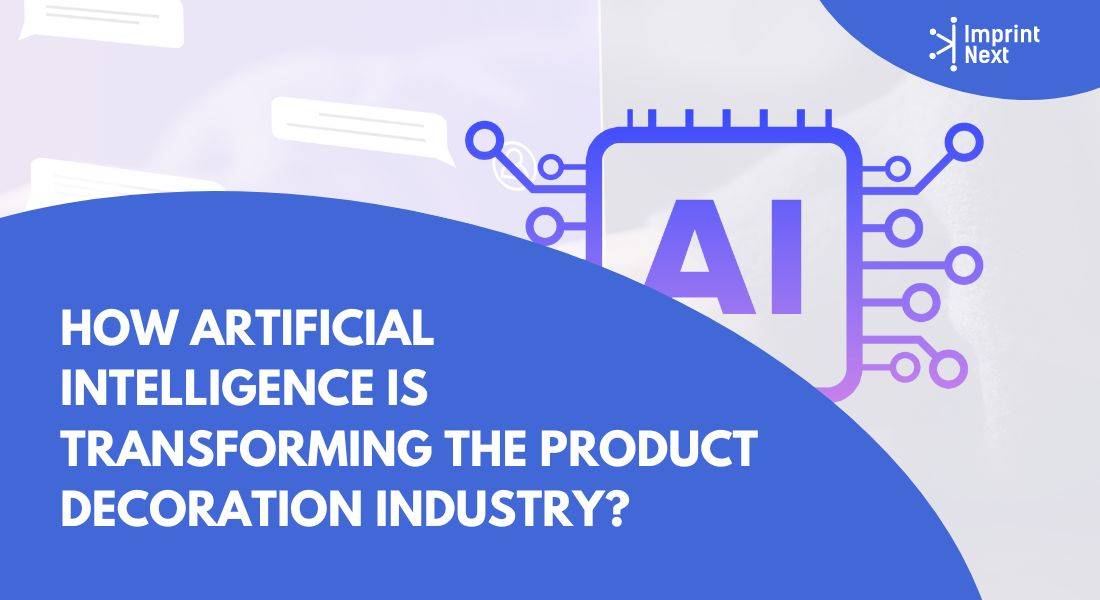Impact of artificial intelligence on the design industry’s workflow is revolutionizing how designers create and collaborate. AI-powered tools are automating tedious tasks, freeing designers to focus on higher-level creative thinking. From logo design to website creation, AI is streamlining processes, increasing efficiency, and opening up new avenues for creative exploration. This exploration delves into the transformative effects of AI, examining both its benefits and potential challenges for the future of design.
This analysis will explore how AI is impacting various aspects of the design workflow, from initial ideation and concept development to final production and client collaboration. We’ll examine specific AI-powered tools and their functionalities, showcasing how they are changing the landscape of the design industry and what designers need to do to adapt and thrive in this evolving environment. We’ll also address the ethical considerations and challenges associated with the integration of AI into design practices.
AI-Driven Design Tools

The integration of artificial intelligence into design workflows is revolutionizing the industry, significantly impacting efficiency and productivity. AI-powered tools are automating previously time-consuming tasks, allowing designers to focus on higher-level creative problem-solving and strategic design decisions. This shift towards automation is not about replacing designers but augmenting their capabilities, enabling them to deliver higher-quality work in shorter timeframes.
AI-Driven Design Tools: Automation and Efficiency
AI is streamlining repetitive tasks, freeing designers from mundane work and allowing them to concentrate on the more creative aspects of their projects. This automation leads to significant time savings and increased efficiency across the entire design process. The following table highlights several AI-powered design tools and their functionalities:
| Tool Name | Function | Impact on Workflow | Example Use Case |
|---|---|---|---|
| Adobe Sensei (integrated into Adobe Creative Cloud) | Automates tasks like image upscaling, object selection, and content-aware fill; offers intelligent suggestions for image editing and design elements. | Reduces time spent on manual image editing and manipulation, improving efficiency in photo and graphic design projects. | Quickly removing a distracting object from a product photograph without manual masking or retouching. |
| AutoDraw by Google | Uses machine learning to suggest vector drawings based on user sketches, improving the quality and precision of hand-drawn elements. | Streamlines the process of creating simple illustrations and icons, particularly beneficial for web design and graphic design projects. | Creating consistent and professional-looking icons for a website navigation menu quickly and easily. |
| Designs.ai | Generates design assets such as logos, social media graphics, and marketing materials based on user input and preferences. | Significantly reduces the time spent on initial design concepts, allowing designers to explore multiple options efficiently. | Rapidly generating several logo variations for a new startup, based on specified brand guidelines and s. |
| Khroma | Provides AI-powered color palette generation based on images or s, ensuring color harmony and brand consistency. | Eliminates the time-consuming process of manually selecting and testing color palettes, saving time and effort. | Generating a color palette for a website design based on a mood board image, ensuring a cohesive visual identity. |
AI significantly assists in automating tasks such as image resizing, color palette generation, and initial design layout creation. For example, AI-powered image resizing tools can intelligently upscale images without losing quality, saving designers hours of manual work. Similarly, AI can generate multiple color palettes in seconds, allowing designers to quickly explore different aesthetic options. Automated layout generation tools can create initial website layouts based on content and design preferences, reducing the time needed for initial mockups.
These automations translate directly into increased efficiency and time savings, often measured in hours or even days depending on the project’s complexity.Consider a website design project. A designer using traditional methods might spend several hours sketching layouts, manually resizing images, and experimenting with color palettes. In contrast, a designer leveraging AI tools could automate many of these tasks, generating initial layouts, resizing images with AI upscaling, and exploring numerous color palettes with AI assistance.
The time investment could be reduced by 50% or more, while maintaining or even improving the quality of the final output due to the efficient exploration of design options. This increased efficiency allows designers to handle more projects or dedicate more time to refining the creative aspects of their work.
AI in Design Ideation and Exploration

Artificial intelligence is rapidly transforming the design process, moving beyond mere automation to become a powerful partner in creative exploration and ideation. AI’s ability to analyze vast datasets, identify patterns, and generate novel solutions empowers designers to overcome creative blocks, explore unconventional ideas, and ultimately produce more innovative and impactful designs. This section will delve into the specific ways AI facilitates design ideation and exploration.AI algorithms are revolutionizing the generation of creative design concepts and the exploration of diverse design options.
These tools don’t replace the designer’s vision but augment their capabilities, acting as a sophisticated brainstorming partner. By analyzing existing design styles, color palettes, and compositional structures, AI can suggest variations and combinations a human designer might overlook. This process accelerates the exploration of the design space, allowing for a wider range of possibilities to be considered in a shorter timeframe.
AI-Driven Concept Generation and Exploration
Several AI tools are emerging that directly support brainstorming and concept development. For example, some AI-powered software can generate multiple design variations based on a single initial concept or a set of user-defined parameters. Others offer interactive interfaces where designers can collaboratively refine AI-generated ideas, iteratively shaping the design through feedback and adjustments. These tools often employ generative adversarial networks (GANs) or other machine learning techniques to produce surprising and unexpected design outputs, pushing creative boundaries.
Imagine an AI tool that, given the prompt “futuristic sustainable city skyscraper,” generates dozens of unique architectural designs, each incorporating different materials, energy-efficient features, and aesthetic styles. The designer can then select, combine, or further refine these AI-generated concepts.
AI-Powered Trend Analysis and Innovative Solutions
AI algorithms excel at analyzing large datasets of existing designs, identifying emerging trends, and predicting future preferences. By processing visual data from various sources, including social media, online design platforms, and market research reports, AI can identify recurring design elements, color palettes, and stylistic choices. This analysis provides designers with valuable insights into current design preferences and helps them identify potential opportunities for innovation.
Tools employing this technology can suggest innovative design solutions by highlighting underutilized design elements or suggesting novel combinations of existing trends. For instance, an AI tool might analyze millions of website designs and identify a growing trend toward minimalist aesthetics combined with bold typography. This insight could then be used by a web designer to create a unique and highly effective website design that aligns with current trends while maintaining a distinct identity.
Hypothetical Scenario: Overcoming Creative Blocks with AI
Consider a designer tasked with creating a new logo for a sustainable clothing brand. The designer faces a creative block, struggling to develop original and impactful concepts. Using an AI design tool, the designer first inputs the brand’s mission statement, target audience, and a few s related to sustainability and fashion. The AI then generates a series of initial logo concepts, each varying in style, color palette, and typography.
The designer reviews these options, identifying elements they like and dislike. They then provide feedback to the AI, refining the parameters and requesting variations on specific elements. This iterative process continues until the designer arrives at a logo that perfectly embodies the brand’s values and resonates with its target audience. The result is a unique and compelling logo design that might not have been achieved without the assistance of AI, significantly shortening the design process and leading to a more successful outcome.
AI’s Influence on Design Collaboration and Communication: Impact Of Artificial Intelligence On The Design Industry’s Workflow

Artificial intelligence is rapidly transforming the design industry, not only automating tasks but also fundamentally altering how designers collaborate and communicate with each other and their clients. AI-powered tools are streamlining workflows, enhancing feedback mechanisms, and fostering more efficient and effective communication across the entire design process. This results in faster project turnaround times, improved client satisfaction, and ultimately, better design outcomes.AI facilitates improved communication and collaboration by offering real-time translation services, enabling seamless interaction between designers and clients from diverse linguistic backgrounds.
Furthermore, AI-powered project management tools allow for centralized communication and file sharing, eliminating the confusion and delays often associated with traditional methods. This centralized approach ensures everyone involved remains informed and aligned throughout the project lifecycle.
AI-Powered Communication Tools in Design
Several AI-powered tools are already enhancing communication within design teams and between designers and clients. These tools offer features such as automated scheduling, real-time chat with translation capabilities, and centralized project repositories. For example, tools incorporating natural language processing (NLP) can summarize lengthy email threads or meeting notes, providing concise summaries for team members who may have missed parts of the conversation.
Similarly, AI-powered design platforms can automatically generate reports tracking project progress, highlighting potential roadblocks, and facilitating proactive communication to address them. These tools are not merely automating existing processes but are creating new avenues for collaboration and understanding.
AI-Powered Feedback Mechanisms for Streamlined Design Review
AI is revolutionizing the design review process by providing automated feedback mechanisms that are both efficient and insightful. Instead of relying solely on manual review and subjective opinions, AI can analyze design mockups, providing objective metrics on aspects such as color contrast, visual hierarchy, and overall aesthetic appeal. This automated feedback significantly reduces the time spent on manual review, allowing designers to iterate more quickly and efficiently.
Moreover, AI-powered tools can identify potential usability issues and accessibility problems, leading to more user-friendly and inclusive designs.
Implementing AI-Driven Communication Tools: A Step-by-Step Guide
Implementing AI-driven communication tools requires a structured approach. The following steps Artikel a process for integrating these tools into a design project to improve teamwork and client interaction:
- Assessment of Needs: Begin by identifying specific communication challenges within the team and with clients. This assessment should pinpoint areas where AI tools can provide the most significant improvements in efficiency and clarity.
- Tool Selection: Based on the needs assessment, research and select appropriate AI-powered communication and collaboration tools. Consider factors such as cost, features, ease of use, and integration with existing workflows.
- Team Training: Provide comprehensive training to the design team and clients on how to effectively use the chosen AI tools. This training should cover all functionalities, ensuring everyone understands how to leverage the tools for optimal communication and collaboration.
- Integration and Testing: Integrate the selected tools into the project workflow. Conduct thorough testing to ensure seamless functionality and identify any potential issues or areas for improvement.
- Monitoring and Refinement: Continuously monitor the effectiveness of the AI tools. Collect feedback from the team and clients, and make adjustments as needed to optimize the workflow and maximize the benefits of AI-powered communication.
AI and the Future of Design Skills
The integration of artificial intelligence into the design industry is rapidly reshaping the landscape of required skills. While some traditional design skills are becoming less critical due to automation, new skill sets are emerging as essential for designers to thrive in this evolving environment. This necessitates a proactive approach to upskilling and adaptation, focusing on the synergistic relationship between human creativity and AI’s computational power.
The impact of AI on the design profession is multifaceted, affecting not only the specific skills needed but also the overall role of the designer. While AI excels at automating repetitive tasks and generating variations, the human element remains crucial for strategic thinking, nuanced understanding of user needs, and the injection of unique creative vision.
Impact of AI on Design Skill Demand
The rise of AI-powered design tools is causing a shift in the demand for specific design skills. Some skills are becoming less critical due to automation, while others are gaining prominence as designers learn to collaborate effectively with AI.
- Decreasing Demand: Basic graphic design skills like image retouching, simple logo creation, and basic web layout are becoming less critical as AI tools can efficiently handle these tasks. The need for highly specialized manual skills in these areas is diminishing.
- Increasing Demand: Skills related to AI tool utilization, prompt engineering, data analysis for design decisions, user experience (UX) research and strategy, and creative direction are becoming increasingly important. Designers need to understand how to effectively guide and refine AI-generated outputs.
- Sustained Demand: Strategic thinking, creative problem-solving, emotional intelligence, and strong communication skills remain crucial. These uniquely human skills are difficult to replicate with AI and will continue to be highly valued.
Adapting Design Skill Sets for the AI Era
To remain competitive, designers must actively acquire new skills to effectively integrate AI into their workflows. This requires a proactive approach to learning and a willingness to embrace new technologies.
- Prompt Engineering: The ability to craft effective prompts that elicit desired outcomes from AI design tools is paramount. This involves understanding the nuances of AI language models and iteratively refining prompts to achieve specific design goals. For example, a designer might need to experiment with different phrasing and s to achieve the desired level of detail and style in an AI-generated image.
- AI Tool Proficiency: Familiarity with various AI-powered design tools, including image generators, design assistants, and prototyping platforms, is crucial. This requires hands-on experience and a deep understanding of each tool’s capabilities and limitations.
- Data Analysis for Design: The ability to interpret and utilize data to inform design decisions is increasingly important. Designers will need to analyze user data, market trends, and AI-generated insights to optimize their designs.
Human-AI Collaboration in Design
The future of design is not about humans versus AI, but rather humans and AI working collaboratively. AI can handle repetitive tasks, generate variations, and provide data-driven insights, while human designers bring creativity, strategic thinking, and emotional intelligence to the process. This collaborative approach leads to more efficient and innovative design solutions.
Consider the design of a new mobile application for a financial institution. AI could be used to generate multiple interface mockups based on user data and best practices. The human designer would then review these options, refine them based on their understanding of user needs and brand identity, and ultimately oversee the creative direction of the project.
The AI could assist in A/B testing different design elements, analyzing user feedback, and iteratively improving the application’s design based on real-world data. This human-AI partnership would result in a more user-friendly and effective application than either could achieve alone.
Ethical Considerations and Challenges
The integration of artificial intelligence into the design industry, while promising increased efficiency and creativity, presents a range of ethical considerations and practical challenges that must be carefully addressed. Ignoring these issues could lead to unintended consequences, undermining the very benefits AI promises to deliver. This section explores key ethical concerns and practical hurdles, along with potential mitigation strategies.
Copyright Infringement and Algorithmic Bias in AI-Generated Designs, Impact of artificial intelligence on the design industry’s workflow
AI design tools learn from vast datasets of existing designs. This raises concerns about copyright infringement, as the AI might inadvertently reproduce elements of copyrighted work in its creations. Algorithmic bias, stemming from biases present in the training data, can lead to AI-generated designs that perpetuate harmful stereotypes or exclude certain demographics. For example, an AI trained primarily on images of Western architecture might consistently generate designs that lack cultural diversity.
Addressing these issues requires careful curation of training datasets to ensure diversity and representation, and the implementation of robust mechanisms to detect and prevent copyright infringement. Transparency in the AI’s decision-making process is crucial, allowing designers to understand and correct any biases that emerge. Furthermore, establishing clear legal frameworks regarding the ownership and copyright of AI-generated designs is essential.
Challenges in Integrating AI into Design Workflows
Integrating AI into established design workflows presents several challenges. High initial costs associated with acquiring and implementing AI software and hardware can be a significant barrier for smaller design firms. Moreover, adequate training is required for designers to effectively utilize these tools, demanding significant time and resources. There’s also the concern of potential job displacement, as AI can automate certain aspects of the design process.
To mitigate these challenges, affordable and user-friendly AI tools are needed. Industry-wide training programs can help upskill designers, allowing them to leverage AI’s capabilities while retaining their core skills. Focusing on AI as a collaborative tool rather than a replacement for human designers can ease concerns about job displacement, highlighting AI’s ability to augment human creativity rather than replace it.
Government incentives and subsidies can also help smaller firms adopt AI technologies.
Hypothetical Case Study: AI-Generated Logo for a Non-Profit
Imagine a non-profit organization dedicated to promoting diversity and inclusion commissions an AI to design its logo. The AI, trained on a dataset heavily skewed towards existing logos, generates a design that inadvertently incorporates elements reminiscent of a logo already used by a competing organization. This raises ethical concerns about potential copyright infringement and brand confusion. Furthermore, the AI’s generated design, reflecting the biases in its training data, lacks the visual representation of diversity and inclusion the non-profit intended.
The ethical dilemma here involves balancing the organization’s desire for a unique and impactful logo with the potential for legal issues and the perpetuation of harmful biases. Solutions could include thoroughly reviewing the AI’s output for copyright infringement and ensuring the training data is diverse and representative. The organization could also involve human designers in the process, using the AI as a tool for ideation and exploration, but retaining human oversight to ensure ethical and inclusive outcomes.
Ultimately, a balance between leveraging AI’s efficiency and maintaining human control over ethical considerations is key.
Ultimate Conclusion

The integration of artificial intelligence into the design industry’s workflow is undeniably reshaping the creative landscape. While challenges remain, the potential for increased efficiency, enhanced creativity, and innovative collaboration is immense. By embracing AI responsibly and adapting their skill sets, designers can leverage these powerful tools to create more impactful and efficient work, ultimately leading to a future where human creativity and artificial intelligence work in harmony.

